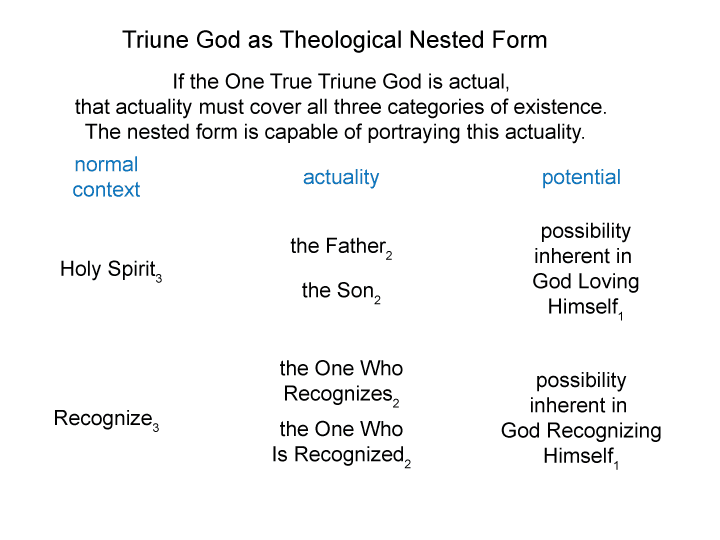[Actuality belongs to the category of secondness. Secondness always contains at least two elements. One can think of secondness as “pairs of cause and effect”, where “one element is distinct and (somehow) determines the other”.
For “God Recognizing Himself”, the two elements in actuality must be “the One Who Recognizes” and “the One Who Is Recognized”.
In addition, “the One Who Recognizes” cannot be identical to “the One Who Is Recognized”. Why? That would be a monad. Identity belongs to firstness. Actuality requires two elements that we (humans) perceive as distinct, separable, yet contiguous.
“The nature of the divine” dictates that “both these actualities must be divine”.
Otherwise, God would not be omniscient (literally, all knowing, corresponding to The One Who Recognizes) as well as omnipresent (literally, all there, corresponding to The One Who Is Recognized).
Both actualities in this dyad are capable of generating their own normal contexts.
They are experienced as Persons belonging to “the actuality of God Recognizing Himself”.]

